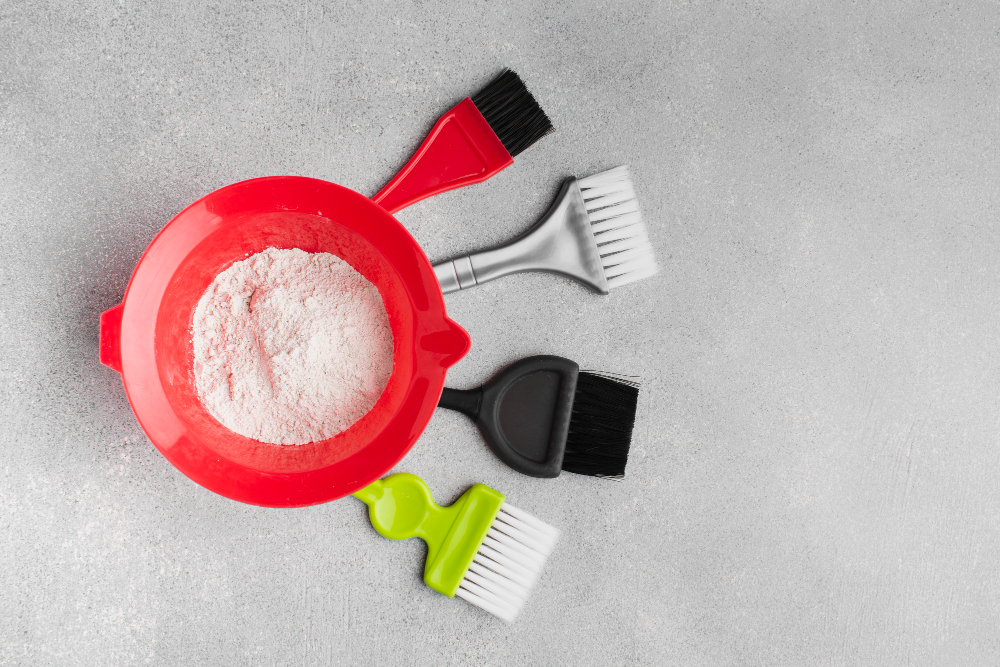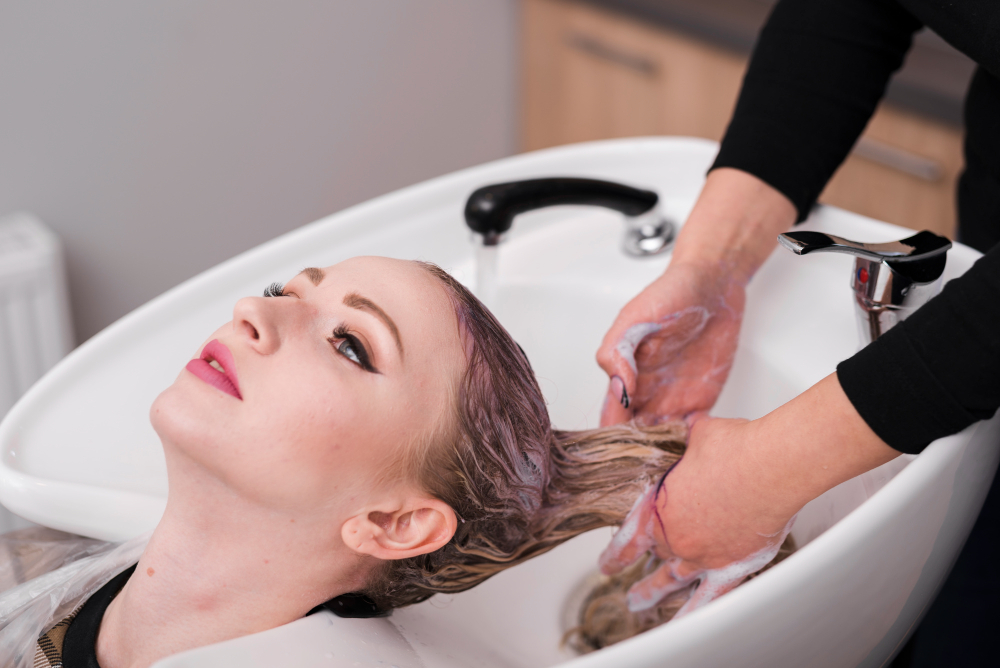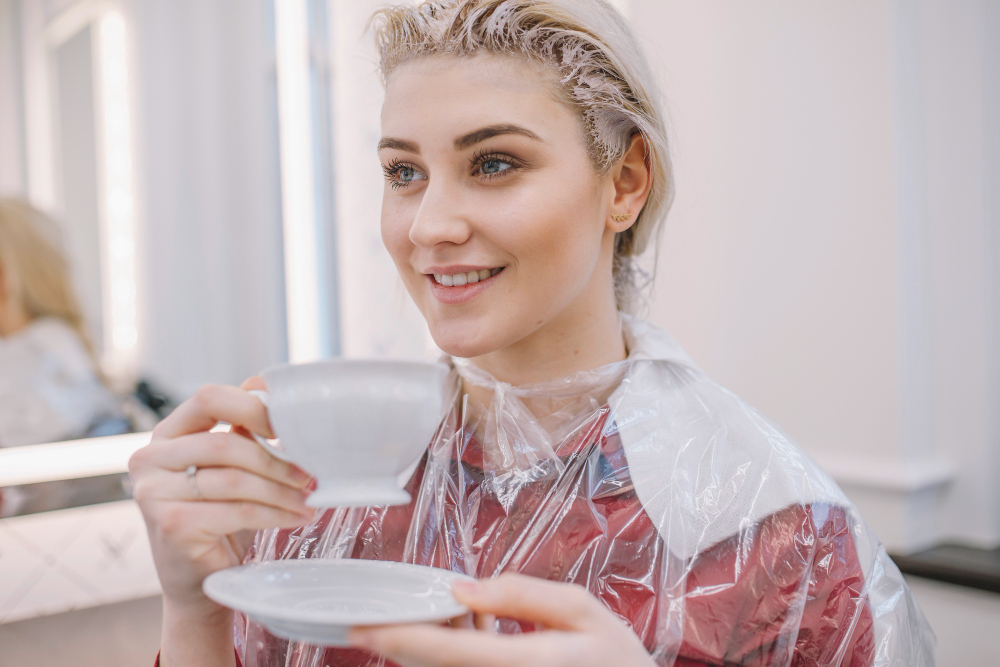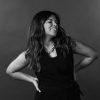Thinking about going blonde or trying that sun-kissed, beachy look? You’re not alone. Bleaching hair is one of the most popular transformations in salons today.
But here’s the catch: bleaching can be harsh on your strands if not done correctly. Many end up with dry, brittle hair or worse, permanent damage, simply because they didn’t know the proper prep and aftercare steps.
At Haste Hair, we understand how exciting (and nerve-wracking) that change can be. Whether you’re new to bleaching or just maintaining your blonde, we’ve helped countless clients achieve stunning results without compromising hair health.
With professional stylists, proven aftercare routines, and the latest techniques, we know exactly how to lighten your hair safely and keep it shiny and strong.
So, before you reach for that bleach kit or book your next hair bleaching appointment, read this complete guide. You’ll learn how bleaching works, how often to do it, what mistakes to avoid, and the right way to care for your hair afterward.
What is Hair Bleaching?

When it comes to hair bleaching, our stylists use a chemical process to lighten your natural color by stripping pigment from the strands.
The formula contains an alkaline agent that opens your hair’s cuticle (the protective layer), allowing an oxidative agent to dissolve melanin, the pigment that gives hair its color.
The longer the bleach stays on, the lighter your hair becomes. However, a single session doesn’t always achieve the perfect blonde; your natural color, texture, and history all play a role.
⚠️ If bleaching isn’t done professionally, the cuticle can remain open, allowing moisture to escape. That’s what causes dry, brittle, or damaged hair.
💡 Good news: with proper aftercare for bleached hair, you can restore strength and shine. Also, check out our article on bleach wash for hair.
How Often Can You Bleach Your Hair?

When it comes to bleaching hair, we recommend waiting six to eight weeks between bleaching sessions to allow your hair to recover. If you’re going from dark brown or black to platinum, you may need several sessions, but never back-to-back.
Avoid bleaching twice in one week. Instead, follow your colorist’s guidance and schedule your next hair bleaching appointment based on your hair’s condition.
Avoid These Common Mistakes When Bleaching Hair

1️⃣ DIY Bleaching Hair
Bleaching your hair at home might seem easy, but it’s one of the quickest ways to damage your hair. Even experienced stylists find it challenging to get even results. Instead, book a professional consultation before bleaching. Check out our article on salon color vs box dye for more insight.
2️⃣ Not Sharing Hair History
Bleach works best on virgin hair, which has never been chemically processed. Always tell your colorist if you’ve used dye or treatments before — hidden color layers can create uneven tones and unexpected bands.
3️⃣ Not Prepping the Hair
Healthy hair handles bleach better. Use a deep-conditioning mask two weeks before your appointment and avoid shampooing 48 hours before bleaching to protect your scalp.
4️⃣ Bleaching Your Ends
If your ends are already light, avoid bleaching them again. Over-bleaching permanently lifts the cuticle and causes breakage.
Other Ways to Lighten Hair Naturally

If you’d rather go subtle, try natural methods instead of harsh bleach:
- Lemon juice + sunlight: Mix three lemons, two tablespoons of oil, and water in a spray bottle. Apply and sit in the sun briefly.
- Chamomile tea rinse: Brew five tea bags in two cups of boiling water, add lemon juice, and spray onto your hair.
- Honey & cinnamon mask: Mix five tablespoons of raw honey, water, and olive oil. Leave for a few hours before rinsing.
⚠️ Even natural ingredients can dry hair, so always follow with conditioning treatments.
Aftercare For Bleaching Hair

Proper aftercare is the secret to keeping your new blonde looking glossy, not fried.
- Use violet or purple shampoo to neutralize yellow/brassy tones.
- Limit shampooing — let natural oils nourish your scalp.
- Try co-washing (using conditioner instead of shampoo) on dry days.
- Apply deep conditioning masks regularly or visit us for an intensive bleach-blonde treatment.
- Use leave-in conditioners to lock in moisture.
- Incorporate protein treatments to restore keratin.
- Be gentle when detangling — use a wide-tooth comb or wet brush.
- Trim regularly to prevent split ends.
- Avoid heat tools when possible — embrace your natural texture and try no-heat styling methods.
Bleaching Your Hair the Smart Way
Bleaching your hair can be an exciting transformation, but only if done right. At Haste Hair, our color experts will guide you safely through the process and recommend the perfect aftercare for bleached hair to keep your locks healthy and radiant.
💬 Ready to go blonde? Book a consultation today and let’s create your perfect shade.
FAQ
How can I take care of bleached hair at home?
Use deep-conditioning masks, purple shampoos, and leave-in conditioners to restore moisture and maintain tone. Avoid excessive heat styling and gently detangle to prevent breakage.
How often should I bleach my hair?
It’s safest to wait 6–8 weeks between bleach sessions to let your hair recover. Rushing the process can cause dryness, breakage, or uneven color.
What are the best treatments for bleached hair?
Keratin, protein-based treatments, and bond-repair products like Olaplex help strengthen weakened strands. Regular use keeps your hair soft, shiny, and resilient.
Can bleached hair be damaged by sun or beach exposure?
Yes, UV rays and saltwater strip moisture and weaken the hair cuticle. Protect your hair with UV sprays, hats, or leave-in conditioners when outdoors.
How do I prepare my hair before bleaching?
Deep-condition your hair 1–2 weeks before your appointment and avoid washing for 48 hours prior. Healthy, nourished hair withstands bleach better and reduces the risk of damage.









